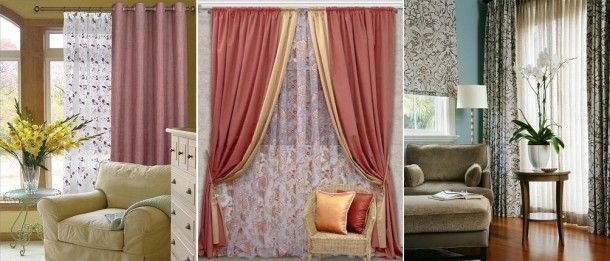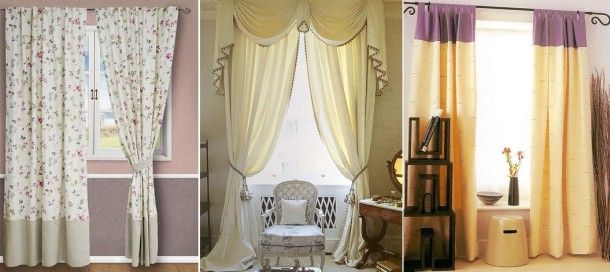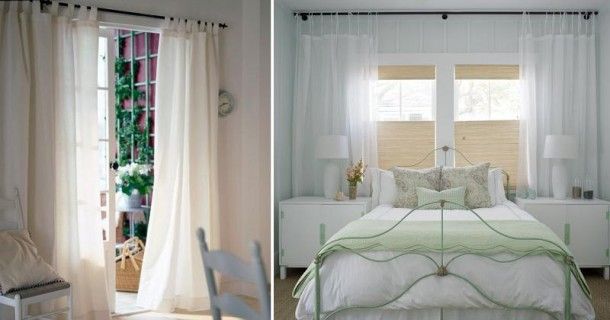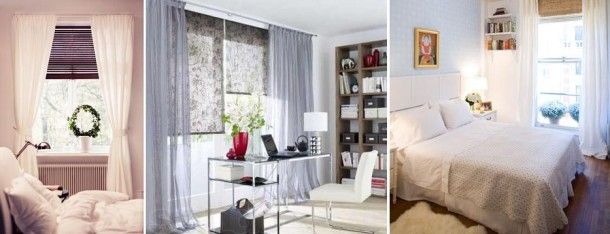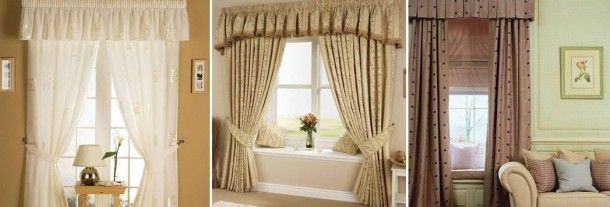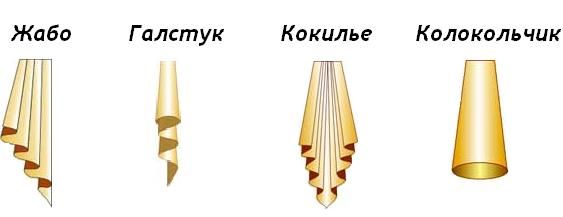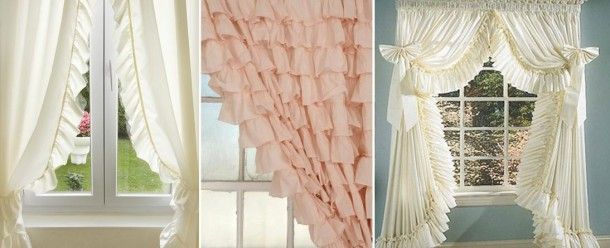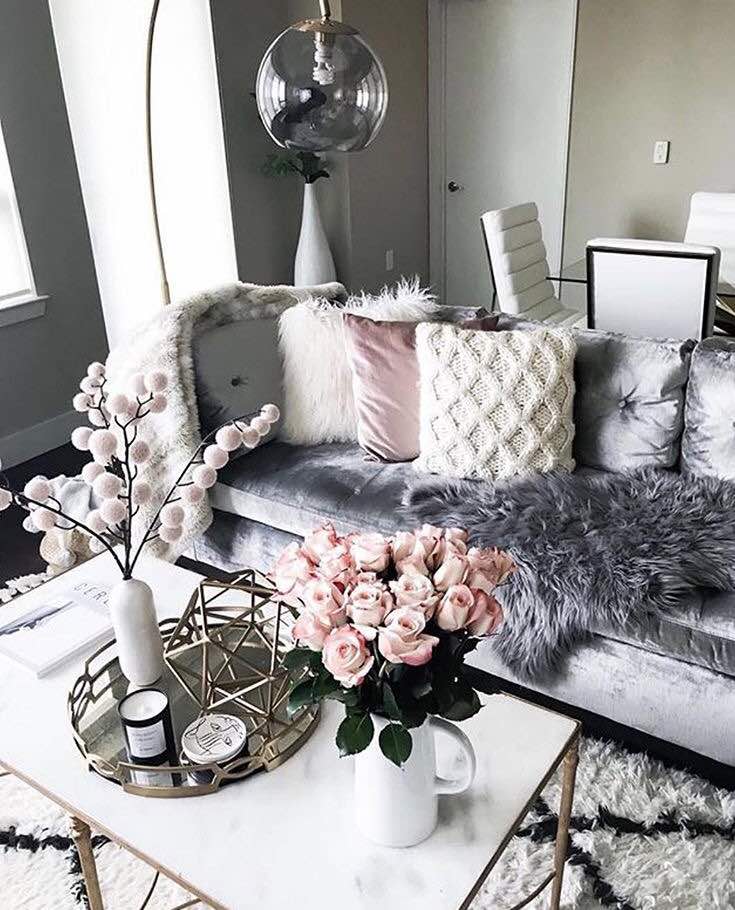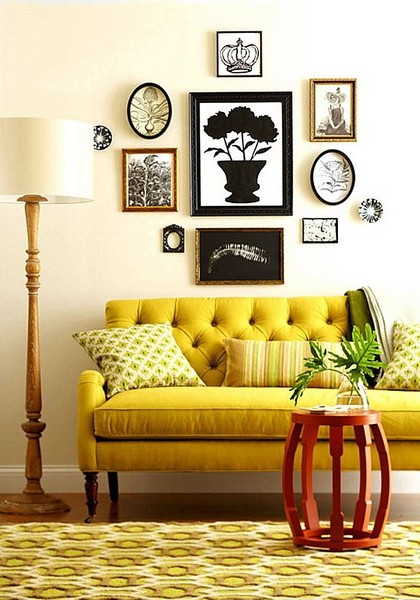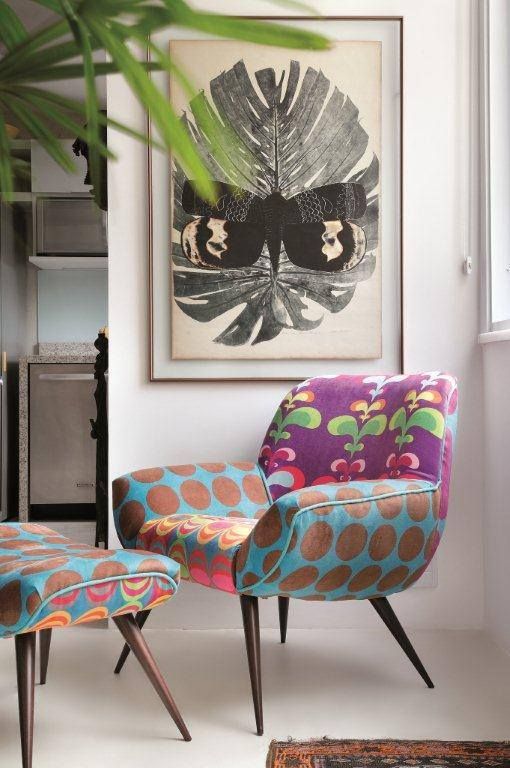Correctly selected curtains will help to create a cozy and warm atmosphere in the house, which can become the main emphasis in the interior. Curtains, as a rule, are the final touch – they are hung up when the repair is completed, the color scheme of the room is indicated, the furniture is in place.
Types and varieties of curtains in the interior
Very often we confuse interior terms without understanding the difference between them, or we use them as synonyms when they are not. Curtains, drapes, curtains, curtains … All these terms designate a fabric which decorate a window opening. Let’s clarify the difference between these concepts..
Varieties of curtains
Portiere – This is a curtain for a window (less often a door) opening, which is made of dense heavy fabric on a lining. With full curtains of windows, the curtain perfectly copes with its main task – protecting the room from sunlight and prying eyes. Draperies consist of one or two vertical panels of fabrics such as velvet, tapestry, jacquard. Sometimes light fabrics are also used – cotton, linen, viscose, natural silk. As a rule, curtains have a rich shade, they can both act as an accent and maintain a common color gamut.
A curtain is a curtain of transparent thin fabric (veil, tulle, organza, mesh) that covers all or part of the window. Often curtains are light airy shades, white, beige, light blue shades are very popular.
The curtains are hung on the windows together with light curtains (as on compilation 1), or with thick Roman or roller blinds (as on compilation 2), they can also decorate the window zone individually (compilation 3). The same applies to curtains: sometimes curtains appear as the only window decor (compilation 4), sometimes in combination with Roman or roller blinds (compilation 4), or, as already mentioned, together with curtains (compilation 1).
1 Compilation 1: Curtains with curtains

1 Selection 2: Drapes with Roman or Roller Blinds
1 Compilation 3: Curtains only
2 Compilation 4: Curtains
1 Selection 5: Curtains and Roman curtains
Curtains are the common name for various types of curtains, which can vary by type of canvas, by style. They can be classified into different categories, for example, by the type of fastening to the cornice, the mechanism for lifting or sliding the curtains, the manufacturing technology and many other features that we will try to make out in this and subsequent articles. First, let’s look at the details that are used to decorate curtains..
Pelmet
Pelmet – This is the upper horizontal decorative element of the curtain that covers the cornice. Lambrequins are straight or curly, the lower edge of which is often adorned with braid or fringe. The appearance of the lambrequin largely depends on the style of the room, as well as on the shape of the window and the type of finishing fabric. Often, the fabric itself prompts the line of the lower edge: curtains with a geometric pattern (cage, vertical or horizontal stripes) require a clear straight edge, for example in the form of zigzags or teeth, in contrast to them, curtains with floral patterns look good near the edge in the form of bends and festoons. For lambrequin, you can use the same fabric as on the curtains or choose a fabric with a contrasting pattern that will complement the color scheme of the room. Decorative details that are used to decorate lambrequins: trim braid, fringe, brushes.
Smooth soft pelmet
Among lambrequin, the most common types are distinguished: bando, swagi. Let us dwell on them in more detail, as well as on other elements complementing the curtains.
Bando is one of the varieties of lambrequins, the characteristic feature of which is a rigid base, non-woven material and a curly or even edge. A modern bando can visually change the height of the ceiling (if you fix it above the level of the window opening) or the width of the window (if you fix it wider than the window opening). Such a lambrequin will not necessarily be really hard to the touch, but if there is a glue base and draping is impossible – the lambrequin is called hard.
Swag is one of the most common types of lambrequins in the post-Soviet space – semicircular folds of soft flowing fabric, one or two edges of which sag freely. Swag refers to the soft type of lambrequins. Swag can still be found in the house of most of our neighbors, despite the fact that they have not been found among trends in world design for a long time. Do not forget that swagi is a complementary element of classical design, in a modern interior it is better to give preference to simpler forms – direct curtains or Roman curtains.
Curtains with swag
Free drapery lambrequins, which are a piece of cloth thrown over the cornice rod and hanging from the sides of the spontaneously formed folds. Swag with sag.
Swag with sag
Additional elements of curtains
In the case when the windows are decorated with swag, often there are additional central and side elements that give the curtains a complete look. Such elements can be frills, ties, chillies or bells, which differ in the number of folds and their location.
Ruffles are used to decorate curtains and give great solemnity and elegance to all types of curtains. The ruffles are attached along the edge of the curtains, along the lower edge of the lambrequin, to the hooks and even the entire area of the curtain.
More feature articles:
Ways of fastening curtains: eyelets, drawstring, loops, ties, braid, rings
Curtains: grip for curtains, straight curtains or puffs?
Roman curtains: types and features
Roman curtain in various rooms
Do it yourself: Roman curtains. Step by step instructions
Roller blinds
Cafe style curtains
French curtains
English (London) curtains in the interior
Austrian curtains in the interior






